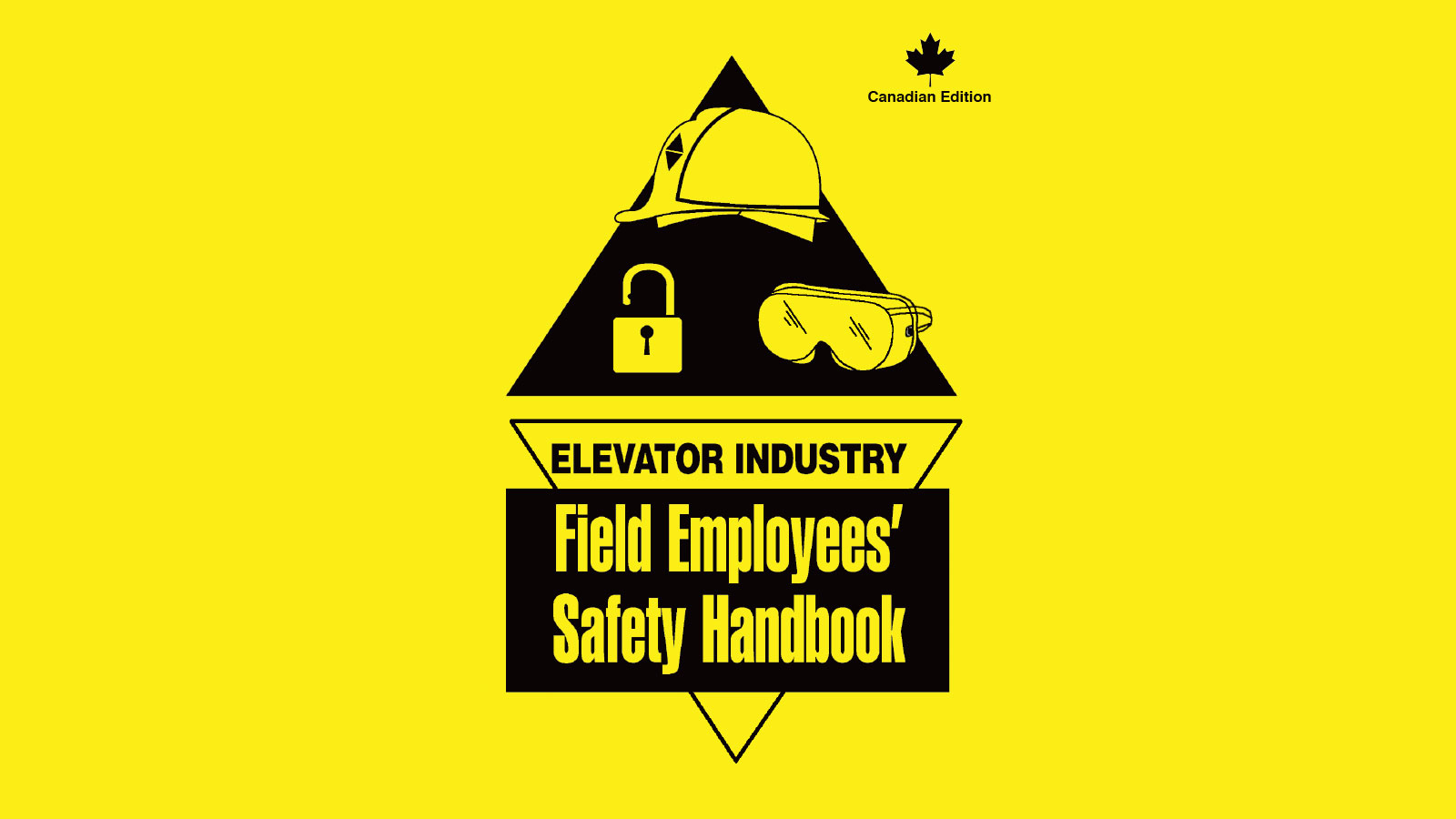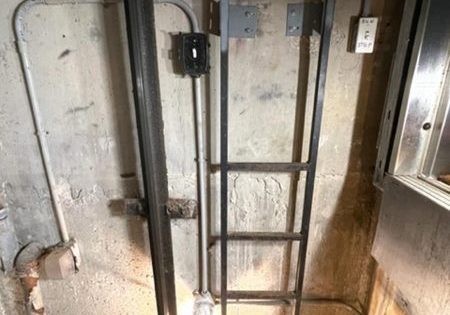Key differences in the Canadian version highlighted
The new Canadian version of the Elevator Industry Field Employees’ Safety Handbook is available now. This project was started three years ago, but like many other things, it was delayed by the pandemic. The National Elevator Industry Inc. (NEII) Safety Committee edits this book with input from National Association of Elevator Contractors (NAEC), NAESA International and, now, Canadian Elevator Contractors Association (CECA). Elevator World Inc. copyrights and publishes it.
The book is updated every five years, and the color of the cover is changed to recognize printed versions. Currently, we are using the 2020 version, and the color is yellow. The Canadian version will be distinguished by a maple leaf, but the color will remain the same as the U.S. version.
The primary editors of the Canadian version of the Handbook are Catharine Bothwell, executive director of CECA, and Don Sanchez of Garaventa Lifts. Sanchez manages a branch operation for Garaventa Lifts in British Columbia, Canada. He has been in the elevator industry for 30 years, is both CET® and CAT® certified and is actively involved in training, certification and safety for elevating device mechanics. Sanchez is also on the board of directors for CECA, currently serving as the vice president and Western Region chair. He is also a member of the CECA Private Residence Division, which focuses on guiding the residential elevator industry towards higher levels of safety and accountability.
It should be emphasized that this version of the Handbook contains the exact same safety advice and rules as the 2020 version used in the U.S. It was agreed that a few changes would make it more useful for the Canadian audience.
It should be emphasized that this version of the Handbook contains the exact same safety advice and rules as the 2020 version used in the U.S. It was agreed that a few changes would make it more useful for the Canadian audience.
Here are the primary differences in the Canadian version of the book:
- In the Preface it states:
“There are fourteen jurisdictions in Canada — one federal, ten provincial and three territorial each having its own Occupational Health & Safety (OH&S) legislation. A List, including contact information, is provided after the index at the end of this handbook. This handbook provides the minimum safety requirements developed by NEII to comply with the United States Occupational Safety and Health Administration (OSHA). However, (in Canada) you must also reference your local OH&S legislation for specific requirements.”
- Anywhere that the book says, “state or federal OSHA” it has been changed to “local or provincial OH&S legislation.”
- All measurements now have the metric equivalent throughout the book.
- Under the area of eye protection, it refers to the “CSA Standard” rather than ANSI Standard.
- Under foot protection, it refers to the “CSA Standard” rather than the ASTM.
- Under foot protection, “Electric shock protective footwear” was added when working around electrical equipment.
- Fall protection distances may be slightly different in some provinces, so the Canadian book says: “(refer to your local OH&S legislation for fall distance limit).”
- Whenever A17 is referred to, “A17/CSA” is used instead.
- Under Radio Frequency Awareness, “Canada Health” was substituted for ANSI.
- Under Blood Borne Pathogens, OSHA Standards are replaced with:
- Canadian Environmental Protection Act (CEPA) — The Act governs a variety of environmental matters, such as air and water pollution, waste management and toxic substances.
- Canadian Centre for Occupational Health and Safety (CCOHS) — CCOHS was established in 1978 by the Canadian Centre for Occupational Health and Safety Act and provides information, training, education, management systems and solutions that support health, safety and wellness programs.
- Canadian Standards Association (CSA) — CSA is a global organization dedicated to safety, social good and sustainability, a leader in Standards Development and in Testing, Inspection and Certification around the world, including Canada.
- Under definitions: The Occupational Safety & Health Administration (OSHA) was replaced with: Occupational Health & Safety Legislation (OH&S) legislation in each jurisdiction outlines the general rights and responsibilities of the employer, the supervisor and the worker through an Act or statute and related regulations. Regulations made under an Act define the application and enforcement of an Act. Each of the ten provinces, three territories and the federal government has its own OH&S legislation.
- As mentioned previously, the last three pages lists the 14 jurisdictions in Canada with their contact information.
The CECA Board has already ordered a number to give to both the first-year and second-year students attending the two-year Elevating Devices diploma program at both Durham College in Whitby, Ontario, and Mohawk College in Stoney Creek, Ontario.
It is anticipated that a number of companies in Canada will want to use this special book that has been tailored to their needs.
Get more of Elevator World. Sign up for our free e-newsletter.










